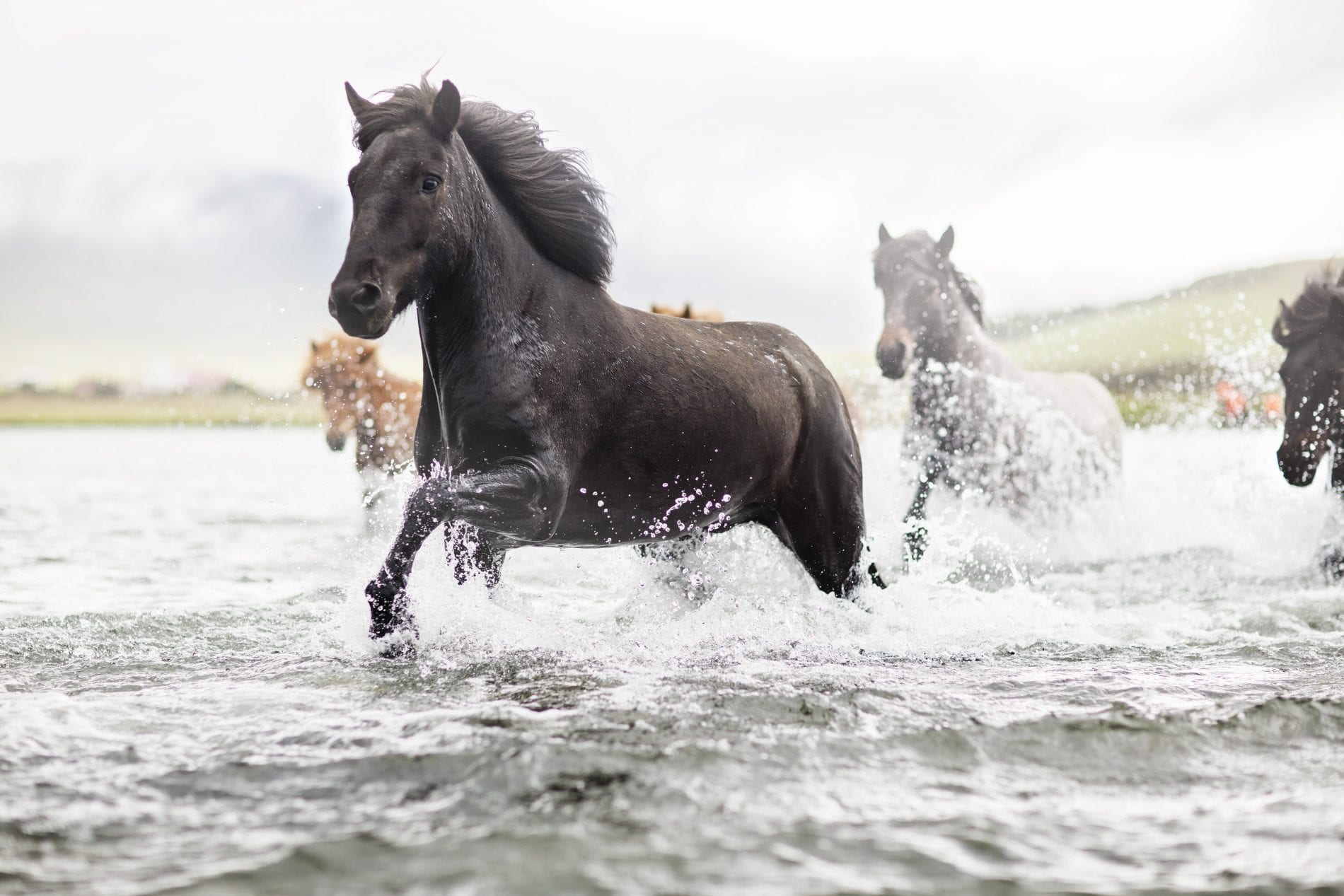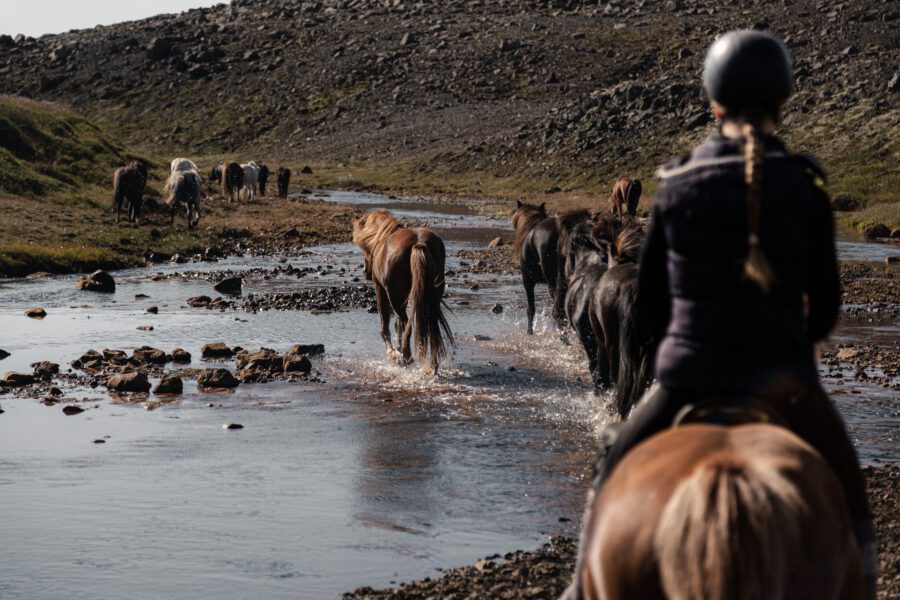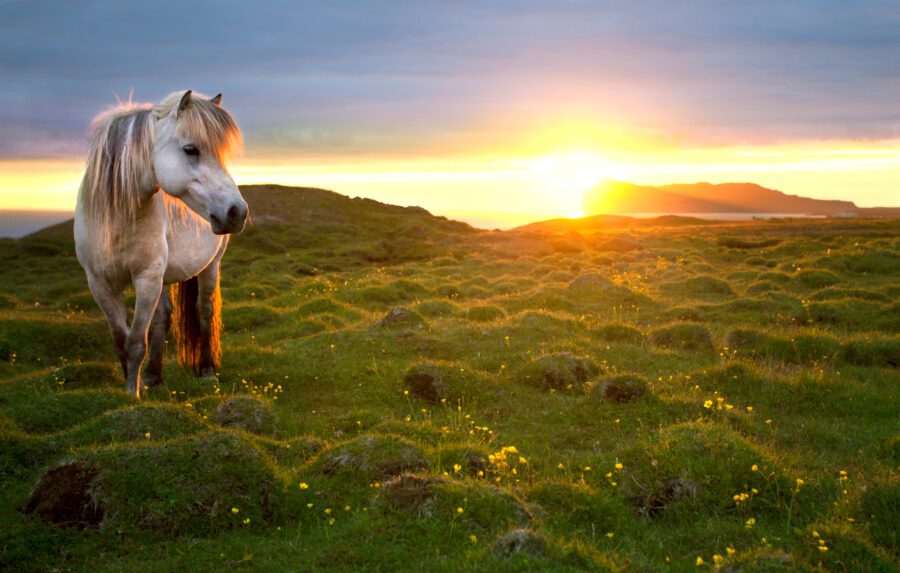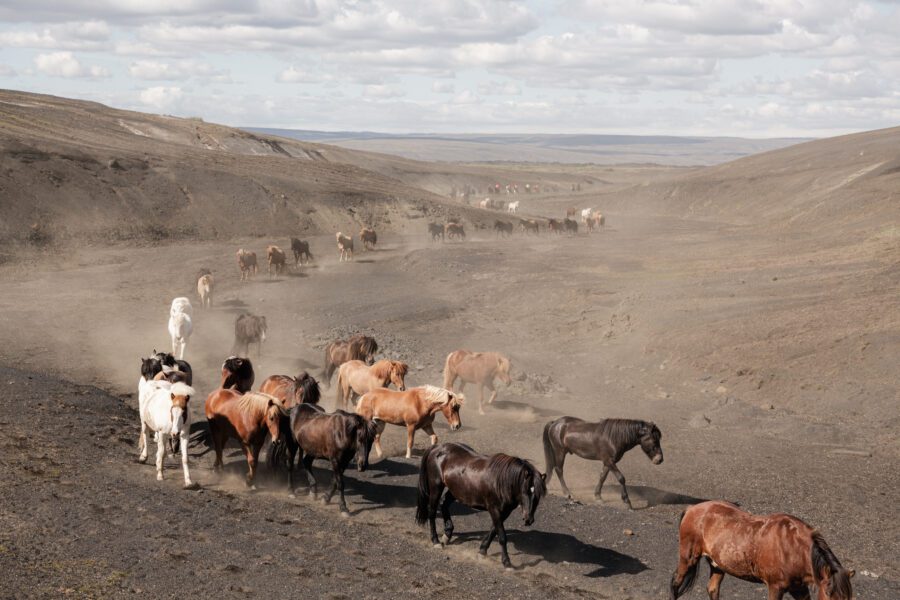
Riders of all abilities will enjoy exploring the northwest of Iceland. Trails lead to Lake Mývatn, a volcanic lake which is Iceland’s sixth-largest but one of its most famous. Nearby, the Mývatn Nature Baths are a naturally heated manmade lagoon, the north’s answer to the Blue Lagoon with mineral-rich waters thought to offer health-giving properties. Hverir is also close by, an area of hot springs with plopping mud pools and steaming fumaroles.
The region is home to two of the country’s most impressive waterfalls; together they are sometimes referred to as Beauty and the Beast. Goðafoss Waterfall, or the waterfall of the gods, has a spectacular 30-meter span, while Dettifoss is the largest by volume, with water pouring over a 45-meter drop into the Jökulsárgljúfur canyon below. Also on the Diamond Circle route is the Ásbyrgi Canyon. Its unusual horseshoe shape and wooded floor draw curious travelers. Horse lovers will be charmed to hear that legend holds that it’s one of the hoof prints of Odin’s eight-legged horse Sleipnir.
One of the most famous horse riding destinations in the north of Iceland is Skagafjörður. It has a proud equestrian heritage, said to be the sole place in Iceland where horses outnumber people. The area is home to an annual horse roundup, where locals and visitors share the task of bringing the horses down from the mountain pastures for the winter. Riders can follow trails past herds of free horses, passing through the Gilhagadalur Canyon and Svartádalur Valley with Hofsjökull and Langjökull glaciers in the background. Riders also come to Eyjafjörður, north Iceland’s longest fjord and a great place to ride in the land of the Midnight Sun. The trails are suitable for anyone.
More challenging is the rugged terrain of the highlands. This remote area forms the larger part of Iceland’s interior, accessed in summer only via the F roads which close when the weather closes in. Some parts of these mountains are only accessible on foot or by horse. If you plan to tackle these trails you’ll need to be an accomplished rider, confident in the saddle. Overnight, you’ll stay in mountain huts, traveling with a herd of loose horses that are rotated so you ride several during your trip allowing each to rest.
The must-do ride in the northern highlands is the Kjölur Trail. If you ride this path you’ll be following in the footsteps of 10th century Icelanders who used it to make the sometimes perilous crossing from north to south on their way to the Alþing at Þingvellir. Hofsjökull and Langjökull glaciers dominate the scenery and the trail also passes the geothermal area of Hveravellir. The Kjölur Trail is one of the country’s best long-distance rides and if you have the ability and fitness to complete it, it may well be the ride of your life.


